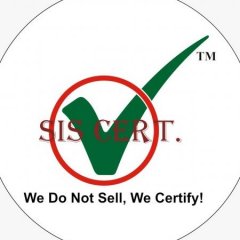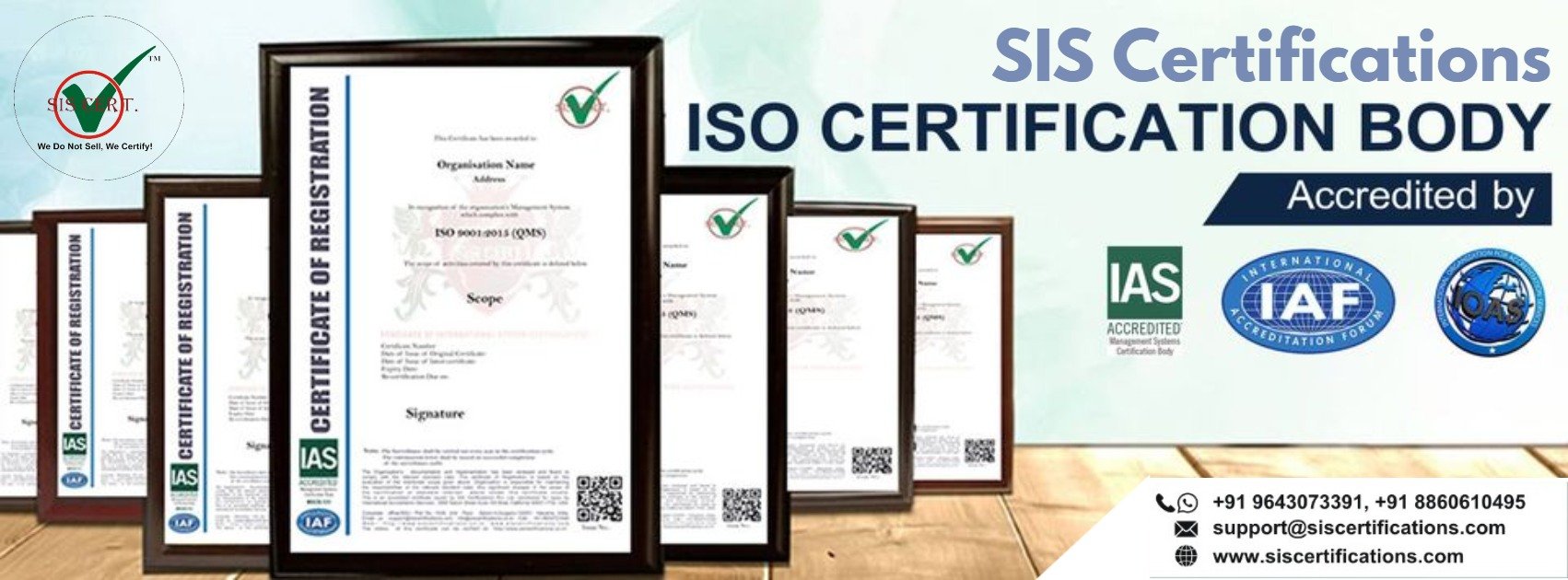-
Публикаций
5 -
Зарегистрирован
-
Посещение
Репутация
0 НейтральныйПерсональная информация
Посетители профиля
Блок последних пользователей отключён и не показывается другим пользователям.
-

ISO 37001 Documentation kit for Anti-Bribery Management System
sis certifications опубликовал тема в Предложения и замечания по форуму
An anti-bribery management system demonstrates an organization’s ability to take proactive measures to prevent bribery. Corruption is a misuse of power and trust, and around 53% of the CEOs or high officials are aware of bribery within their organization; more than $1.5 trillion is the estimated annual cost of bribery, and 75% of the bribery incidents take place through intermediaries. To prevent these corrupt practices and implement ethical business practices, the International Organization for Standardization (ISO) has developed ISO 37001:2016 anti-bribery management system certification. ISO 37001:2016 Documentation kit for ABMS ISO 37001 Manual– It has 10 Chapters and 4 Annexure It contains a sample copy of the system manual and clause-wise details of the implementation of ISO 37001:2016. It consists of the context of organization, objectives, sample policy, scope, organization structure and requirements of ISO 37001:2016 from section 4 to section 10. It has 10 chapters covering the company profile, amendment sheet, index and clause-wise details of ISO 37001:2016 and its implementation process. ISO 37001 Procedure – It consists of 7 procedures It contains a sample copy of mandatory documents of ISO 37001:2016 and covers all the details, such as purpose, scope, responsibility, a list of exhibits, reference documents and formats. in this ISO 37001 Documentation kit the list of sample procedures is as follows: Procedure for document and data control Procedure for corrective action Procedure for internal audit Procedure for management review Procedure for Bribery Risk Management Procedure for training Procedure for investigating and dealing with bribery Process Approach – It contains 10 process templates. It provides guidelines for processes, flow charts and process models for process mapping. It consists of process flow charts and activities of all the processes with an input-output matrix for the organization. It helps organizations in process mapping and preparing process documents. List of Process flow chart: Process Flow Chart of Customer Service Process Flow Chart of Dispatch Process Flow Chart of Engineering Process Flow Chart of Marketing Process Flow Chart of Production Process Flow Chart of Purchase Process Flow Chart of Quality Control Process Flow Chart of System Coordinator Processes Process Flow Chart of Stores Process Flow for Training Activity Source link: https://bit.ly/3teQzAW-
- iso 37001 documentation
- iso 37001:2016
- (и ещё 2 )
-
Environment Policy – It requires an organization to outline its environmental policy. An organization must determine business objectives and targets based on its Environment policy. ISO 14001:2015 standard incorporates the principle of sustainable development and performance indicators associated with EMS. The organization needs to establish effective communication, internal and external, to ensure ISO 14001 certification compliance. Planning – Designing plans and strategies for implementing the Environment Management System (EMS). Effective planning and implementation help an organization assess the environmental impacts of business operations. Planning helps organizations identify compliance requirements and document targets and objectives. Implementation – Executing a plan efficiently and effectively is much more valuable than formulating it. It incorporates adjustments and builds new processes and procedures to adapt to changing requirements. An organization requires defining, documenting and communicating the implementation process to give necessary training to employees. It also includes emergency response planning and preparedness. Study and Correction – After implementing the EMS, the organization measures its performance and focuses on optimizing it. It involves reviewing and evaluating existing and new procedures to ensure KPIs are achieved and the effectiveness of EMS. Management Review – A management review is a formal evaluation of the effectiveness of the organization’s Environment Management System. It is one of the most significant elements, as it ensures that everything is functioning within the determined scope. It takes into account any new environmental issue, legislation and changing circumstances. Continuous Improvement – It enables an organization to optimize all aspects of the system and ensures the Environment Management System (EMS) utilizes principles of continuous improvement. The principle of continuous improvement follows the Plan-Do-Check-Act cycle to improve business processes and procedures. Conclusion ISO 14001 certification is an internationally recognized standard developed by the International Organization for Standardization (ISO) that provides a framework for enhancing an organization’s environmental performance. It is a generic standard, and any organization can apply for ISO 14001 standard regardless of size, nature and location. The cost of ISO 14001 Certification varies from organization to organization depending on its size, number of employees, number of branches and the certification body selected by the organization. source link: https://bit.ly/3DSvVva
-
- iso14001certification
- 6 elements of iso 14001
- (и ещё 2 )
-

what is the right time to apply iso 37001 certification
sis certifications опубликовал тема в Предложения и замечания по форуму
If either your business is a small start-up or you are a big player in the market, it’s time for you to think about ISO 37001 certification. The applicability of this certification spans big or small and private or public entities. Organizations, regardless of the sector of operation. Apply for ISO 37001 Certification Online is a useful tool for checking bribery and other corrupt practices within your organization. It is flexible enough to be customized according to the specific requirements of your company. Issued in 2016, ISO 37001 standard aims at implementing the Anti-Bribery Management System (ABMS) in your organization. The focus area of this certification is on checking corporate bribery and other malpractices. Adopting the standard’s guidelines significantly reduces the risks related to corruption by establishing effective controls in the system and processes. Various countries across the globe, such as Peru, Malaysia, Zimbabwe, and Mexico are now considering the usability of ISO 37001 Certification in not just checking the corrupt practices in the corporations, but also in litigation processes during the time of litigation settlement. Now more and more countries require their organizations to acquire ISO 37001 in order to participate in governmental contracts for public procurements. The bribery control plans included in ISO 37001:2016 are given below: An anti-bribery policy Demonstration of leadership by the top management Training and management of Human Resources Procedures for risk assessment A keen eye on projects from within and outside Effective controls in the matters of finance, commerce, and contracts. Policies pertaining to reporting, monitoring, investigating, and reviewing Corrective action plan and continual improvement of ABMS-
- iso 37001 certification
- iso 37001:2016
- (и ещё 2 )
-
ISO (International Organization for Standardization is an independent, non-governmental, international organization that will foster guidelines for guaranteeing the quality, security and proficiency and efficiency of the products or services given by businesses or organizations. ISO 14001 Certification applies to any organization despite its size, industry, or geographic area. How are these standards developed? Every ISO Standard is based on a voluntary, consensus-based approach. Each member of the ISO develops its position to all the standards and these positions are then negotiated with other member countries. Draft of the standards are sent for formal written feedback and each country formally votes on projects at the stage. Various types of organizations can take part, including industry, government and other interested parties, including various non-governmental organizations (NGOs). What does a community need to do in order to have an ISO 14001 compliant EMS? The ISO 14001:2015 standard requires that a company or organization put in place a series of practices and procedures that were taken together, resulting in an environmental Management system. The major requirement of the EMS are as follows: A policy statement that includes commitments to the prevention of pollution, continual improvements of the EMS leading to improvements in overall environmental performances and compliance with all statutory and regulatory requirements. Identification of all community organization’s activities, products and services that could impact the environment. Setting performance objectives for the management that link back to the three commitments established in the community or organization’s policy. Implementing the EMS to meet these objectives. These include activities like training employees, and establishing work instructions and practices. Undertaking periodic reviews of the EMS by the top management to ensure its continuing performance and making adjustments to it, as necessary.
-

Frequently Asks Questions About ISO Certifications
sis certifications опубликовал тема в Предложения и замечания по форуму
What does ISO certification mean? ISO certification is a seal of approval of a third-party organization that a company performs in one of the developed international standards and issued by the International Organisation for Standardization (ISO). ISO is an independent international non-government organisation that brings together experts to share their knowledge and develop international standards which support innovation and deliver solutions to global challenges. Why would I need to become ISO certified? ISO certification demonstrates to your key stakeholders that you have a well-managed, structured, stable and growth-ready company. Individual advantages of each ISO standard include: ISO 9001 prioritizes your clients. ISO 27001 provides protection for your systems, data and reputation. ISO 14001 cuts down on your environmental impact. The ISO 45001 standard helps keep your employees safe. ISO 22301 protects your enterprise from disturbances. The benefits common to all ISO standards are: Increased efficiency. Reduced costs Improved client satisfaction. More engaged workers. Reduced risks Reduction in insurance prices. Assistance in the tender process. By Applying ISO Certification, you demonstrate your organization’s commitment to achieving your goals and enhance customer credibility and trust in your product or service. How much does it cost to become ISO certified? ISO certification costs vary depending on the size of the organization and the level of operation of the business in terms of processes and procedures. If you choose to implement several standards at the same time, special fares are offered. We offer a simple and economical service with flexible terms and conditions. You can ask for a quotation here. Due to our tailor-made proposals and the number of variables that may affect the cost of implementation, we like to meet with our potential clients to better understand them before providing them with costs. source link: https://bit.ly/3nEARMK- 1 ответ
-
- iso certification
- faq iso
-
(и ещё 2 )
C тегом:

